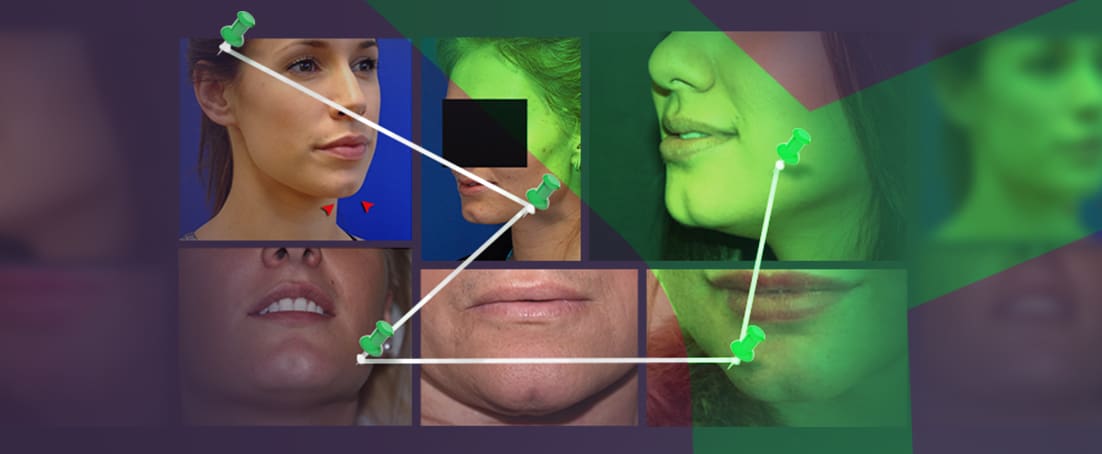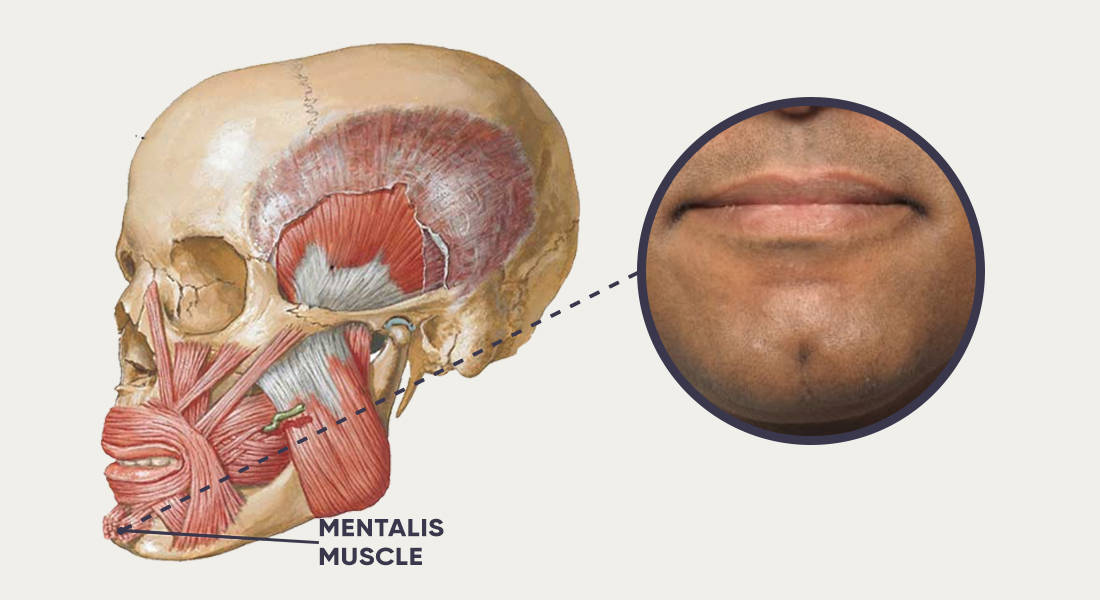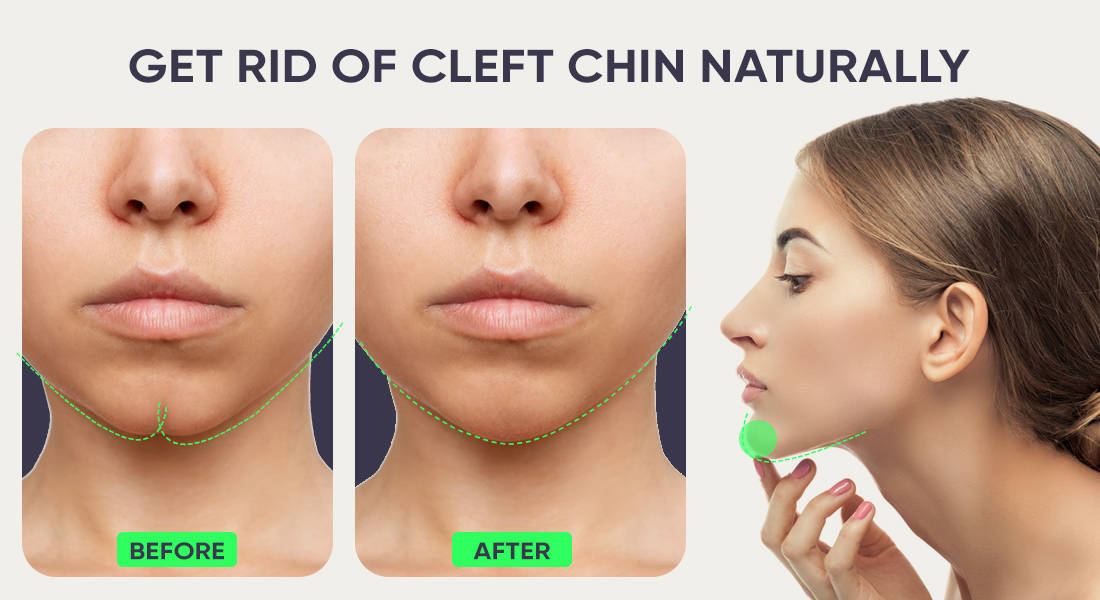
A cleft chin (or butt chin) is a common natural appearance for many people, though some have a more prominent cleft chin, i.e., a slightly more dimpled-looking jaw bone.
In this article, we’ll expose:
- 👫 The origins of cleft chins.
- 🧬 The genetic trait of chin muscles that form a cleft chin.
- 💉 Cleft chin surgery and fillers that can fix it.
Chin clefts are not bad. In fact, there’s even cosmetic surgery on the soft tissue of the chin muscle for additionally making a chin cleft. But, since it may feel strange or cause insecurity for some, let’s find out more about the origins of a cleft chin.
Where Do Cleft Chins Come From?
A cleft chin is among the various types of chin common for humans. As with all other facial feature marks and colors – like our eyes, hair, skin, nose, or face shape – our chin cleft is also a strong trait of genetics.
However, a cleft chin can also be a completely isolated incident of embryonal development, which can be caused because of two main reasons:
- The lower jawbone didn’t completely fuse during the fetal development, either to natural occurrences or some injuries of the mother or the embryo, or
- The skin on the chin couldn’t equally connect and form a normal round chin shape in the middle because of the excessively spaced chin muscles.
One study has proved that the genetic marker for cleft chins is possibly located in chromosome 2, and it’s called rs11684042.
Because of the genetic and obviously inherited character of cleft chins, the ways to get rid of a cleft chin are usually medical procedures, such as cleft chin surgery, as well as corrective dermal synthetic fillers.

Understanding Chin Dimple
A chin dimple is exactly that – having a line on your chin’s middle, which is why it’s commonly called “butt chin” as well.
Having a strong or a weak jawline and a chin cleft is mostly a trait of genetics. Depending on the chin size, however, some clefts might be more or less visible and, thus, become a major facial feature that determines the overall appearance of one individual.
Let’s take John Travolta or Ewan McGregor, and the ultimately popular Hollywood actor at the time, Henry Cavill, for example. They all share the cleft chin but in various shapes and sizes.

Despite their feature – they’re utterly popular and have been on magazine covers, meaning that having a procedure to get rid of dimples is not really necessary. This feature can be the crown on your face as well!
Which Parent Determines the Cleft Chin?
Genetics is a totally unpredictable field, which is why people are still born with genetically inherited diseases, even though some parents don’t have a history of the disease to this day.
The fetus is formed of genes inherited by the mother and father, and their copies into our DNA are called alleles. However, in nature, there’s no perfect ratio of 50:50, meaning one parent’s genetics are always more dominant.
In some cases, neither of the parents could have a cleft chin, but the child does. This is called “variable penetrance”, a very common genetic trait where genes skip a generation or few before they appear again.

Cleft Chin Development
As we already explained, the most common cause of a cleft chin is DNA and inherited genes. This is why it has been scientifically stated that cleft chins are most common for people from the Middle East, Europe, and the South Asian continent.
However, since many external changes occur while growing, a cleft chin might also develop after birth. This usually happens in both men and women during puberty, where a cleft chin is the final result of the growth of the mental protuberance – the front tip of the chin.
But considering that there are facial yoga exercises, such as chin tucking and mewing, that help shape the jawline, get rid of sleep apnea, and align your body posture, the chin can also be affected.
Our Mewing.coach app is the perfect tool to shape your jawline. Here you can see gonial angle examples and mewing transforms so that you can get a broad picture of what’s waiting for you. At the same time, you can also align your jawlines and treat uneven jaw sides – a.k.a. mental tubercles.
Conclusion: Is Having a Dimpled Chin a Curse or Blessing?
Though people are usually born with one, a dimpled chin can also be developed later in life, like during puberty or due to some unfortunate accidents and bone trauma. But you can also work on your chin without the need for surgery.
A good starting point is the mewing technique. Our Mewing.Coach app acts as a personal coach for your facial symmetry improvement. By downloading this app, you can find out when mewing helps you define the chin, what you need to do, etc. With mewing, you are working on your overall facial symmetry alignments, such as cheeks, nose, and chin placement.
Mewing.Coach is also great if you’ve had liposuction on the neck, injected botox on your chin, or other chin surgery, as it can get you back on track during your recovery process. And the best part is that the final results for your chin will be visible in mere weeks!




